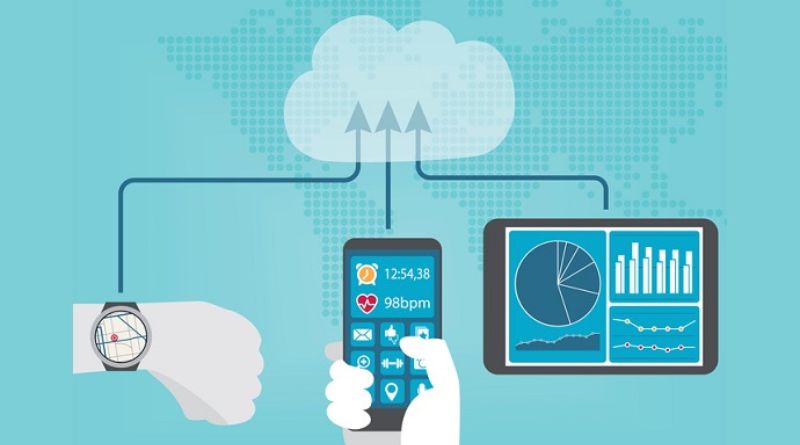Remote patient monitoring is a new and exciting way to care for patients. This service involves monitoring patients using a device they wear on their bodies. These devices collect patient data and interact with centralized storage on the provider’s side. The centralized repository then processes data and alerts providers and carers when a problem is detected. Some systems also allow patients to download diagnostic apps that can help them with heart problems, such as the eGFR.
Cloud-Based Platform
A cloud-based platform similar to the one offered by companies like CoachCare remote patient monitoring provides a single solution for healthcare providers. The device is connected to cloud computing servers and includes several sensors that collect patient information and transmit it to healthcare providers. These sensors may have a heart rate sensor, a body temperature sensor, a blood pressure sensor, and a blood sugar sensor. In addition, the proposed model can also incorporate a stress and consciousness sensor, a pulse counter, and an accelerometer.
The cloud-based platform for remote patient monitoring has many advantages. Unlike traditional methods of remote patient monitoring, this technology allows healthcare providers to access data on their patients at any time. The data is stored in a secure cloud and can be accessed by healthcare providers and the public. This feature makes the entire process seamless and can help healthcare organizations accelerate the adoption of a new business model. The platform also enables healthcare providers to see patient data on a dashboard.
Wearable Devices
The safety platform offers continuous patient monitoring just like remote therapeutic monitoring. Developed on wearable technology, it can capture data about the patient and upload it to a service provider. The devices are simple to use, have low power consumption, and don’t require a smartphone or pairing. The safety platform devices use a built-in eSIM and feature an integrated monochrome display.
The device works by constantly measuring over 20 physiological parameters from a patient’s body. Then, the device transmits that information to a secure cloud where the data can be analyzed. Patients can also use the app to monitor their health. They also send the device’s data to a secure Care Portal hosted on Empatica’s HIPAA-compliant cloud. This way, patients can watch their health data anytime, anywhere.
Data Collection
Remote patient monitoring, also known as remote patient management, is a technology that collects and transmits health data. The data collected can be used by healthcare providers to diagnose and treat patients, even if the patient is located far away. This technology can collect a wide range of data, including blood pressure, heart rate, vital signs, blood sugar, electrocardiograms, and more. These data streams are sent to a monitoring center, which can be in a hospital, skilled nursing facility, or primary care setting. The system can then send the results to a doctor, nurse, or other healthcare professional to assess and treat a patient.
The technology also can help improve the quality of care for patients suffering from chronic conditions. With access to data from a remote location, clinicians can monitor patients and provide better care while reducing the burden on their staff. For example, data collected through remote patient monitoring systems can help reduce readmissions and costs by allowing clinicians to monitor patient data from a distance. Furthermore, remote patient monitoring reduces the time spent on emergency room visits and staff workload.
Benefits
Remote patient monitoring is a growing technology that can help healthcare providers better manage patients with chronic conditions. According to the HIMSS, 60 percent of patients are empowered to share their self-generated health data with clinicians. This technology also helps improve patient engagement and understanding of their conditions. In addition, a study published by health intelligence found that remote monitoring can save patients up to $8,000 per patient per year and reduce hospitalizations by 30%.
Another significant benefit of remote patient monitoring is that it allows for more excellent at-home care. Patients can receive a large portion of their care from home and enjoy many associated benefits, including less travel time and gas costs. The technology also improves communication between the patient and healthcare providers and helps the caregivers deliver better care. It also allows clinicians to evaluate the patient’s condition more effectively and proactively. It can even prevent the spread of infectious diseases.
Cost
The cost of remote patient monitoring is an issue that should concern all hospitals and medical practices. The technology is an excellent way to ensure that the needs of every patient are met, but it should also be cost-effective. A recent study by Martensen found that the technology could save health plans money and improve patient outcomes. In other words, it’s a win-win. It is a smart choice for your organization, and you won’t regret it.
Depending on the size of your patient population, the type of device you need, and the features you want, the cost of remote patient monitoring will vary. For example, an essential service plan may cover the device’s initial set-up and the patient’s education. More advanced service plans may involve the physician reviewing the data and interacting with the patient. Some RPM services are free. If you’re looking for an affordable way to keep track of your patients, consider using the technology to help them stay healthier.

